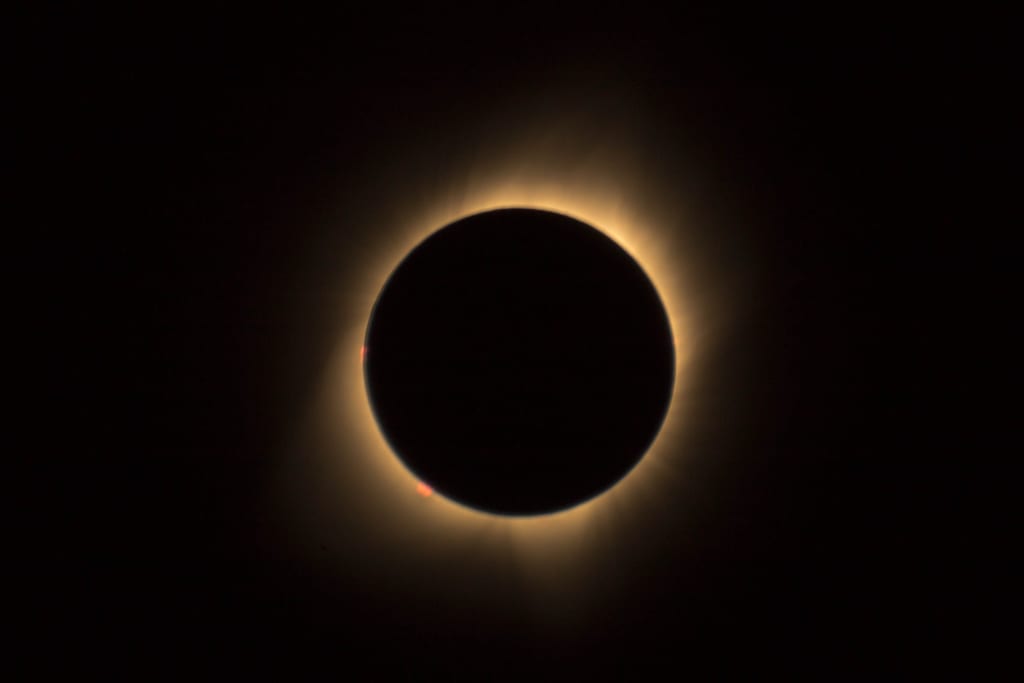
The universe has an uncanny way of captivating the human imagination. One of the most breathtaking celestial events that continue to mesmerize people worldwide is the solar eclipse. Among the various types of solar eclipses, the "ring of fire" or annular eclipse stands out as a spectacular and unique celestial phenomenon. This mesmerizing event leaves observers in awe as the moon gracefully passes in front of the sun, creating a stunning ring of fire in the sky. Let's explore the science, wonder, and significance of the ring of fire solar eclipse.
The Dance of Celestial Bodies
A solar eclipse occurs when the moon, the Earth, and the sun align in a particular way. The moon, which orbits our planet, moves between the Earth and the sun, casting a shadow on the Earth's surface. This alignment can produce three distinct types of solar eclipses: total, partial, and annular.
An annular eclipse, popularly known as the "ring of fire," happens when the moon is near its apogee – the farthest point from Earth in its elliptical orbit. When the moon is at this distance, it appears slightly smaller in the sky, causing it to create a ring-like appearance when it crosses in front of the sun. This unique phenomenon is what sets the annular eclipse apart from other solar eclipses.
The Perfect Alignment: When, Where, and How
The occurrence of an annular eclipse is a celestial dance that requires precise alignment and timing. The moon and the sun need to align perfectly, with the moon positioned directly between the Earth and the sun. This alignment can only happen during a new moon when the three celestial bodies are in a straight line.
When the conditions are right, the moon's shadow falls on the Earth, creating a spectacular visual show. However, it's important to note that annular eclipses are not as common as partial or total eclipses. They occur roughly every 18 months somewhere on Earth, but their visibility is limited to specific regions due to their narrow path.
The best way to witness the "ring of fire" is by being in the right place at the right time. People within the path of annularity, where the moon appears to perfectly encircle the sun, will be able to experience this awe-inspiring event. Others located outside this path will witness a partial solar eclipse, where a portion of the sun remains visible.
The Cosmic Beauty and Human Fascination
The ring of fire solar eclipse is a sight to behold. As the moon crosses the sun's path, it creates an ethereal and almost surreal image. The moon's smaller size compared to the sun leaves a glowing ring of sunlight around the moon's dark disk, forming the "ring of fire." This striking visual effect is a testament to the beauty and wonder of the cosmos.
Throughout history, solar eclipses have held deep significance in various cultures. They were often seen as omens or symbols of transformation. While our understanding of these celestial events has evolved, the sense of awe and wonder they inspire remains constant. In a world where technology has brought the cosmos closer to us, there is still a profound and almost primal connection to these natural phenomena.
Photographers, astronomers, and eclipse chasers from around the world eagerly anticipate annular eclipses, often traveling great distances to witness and capture this extraordinary spectacle. The event is not just a treat for scientists but also a profound experience for all who have the privilege to witness it.
The Scientific Value
Beyond its breathtaking beauty and cultural significance, the ring of fire eclipse also holds immense scientific value. These events provide researchers with opportunities to study the sun's outer atmosphere, known as the solar corona. During a solar eclipse, when the moon blocks the sun's bright disk, the corona becomes visible. Scientists can use this rare occurrence to gather data about the sun's temperature, composition, and magnetic fields, helping us better understand the star that sustains life on Earth.
Furthermore, the shadow of the moon created during an eclipse has inspired scientists to make important astronomical discoveries, such as the verification of Einstein's theory of general relativity during the 1919 total solar eclipse. The moon's passage in front of the sun allows astronomers to conduct experiments and observations that would be impossible under normal circumstances.
Preparation and Safety
Witnessing a solar eclipse, especially the ring of fire, requires proper preparation and safety measures. Looking directly at the sun during an eclipse can cause permanent eye damage. It's crucial to use specially designed eclipse glasses or viewers to protect your eyes. Additionally, telescopes or cameras equipped with solar filters are essential for safe viewing and capturing photographs.
Planning is also essential to ensure that you are within the path of annularity or a location with a partial eclipse, as the event's visibility is limited to specific regions.
Conclusion
The ring of fire solar eclipse is a stunning celestial phenomenon that unites science, wonder, and human fascination. It serves as a reminder of the beauty and complexity of our universe and provides unique opportunities for scientific research. Witnessing such an event is a privilege, and it's essential to prepare and take safety precautions to fully enjoy this extraordinary display of cosmic alignment. Whether for scientific exploration, cultural significance, or the sheer awe of witnessing the universe at work, the ring of fire solar eclipse is an experience that leaves a lasting impression on all who have the opportunity to behold it.





Comments
There are no comments for this story
Be the first to respond and start the conversation.